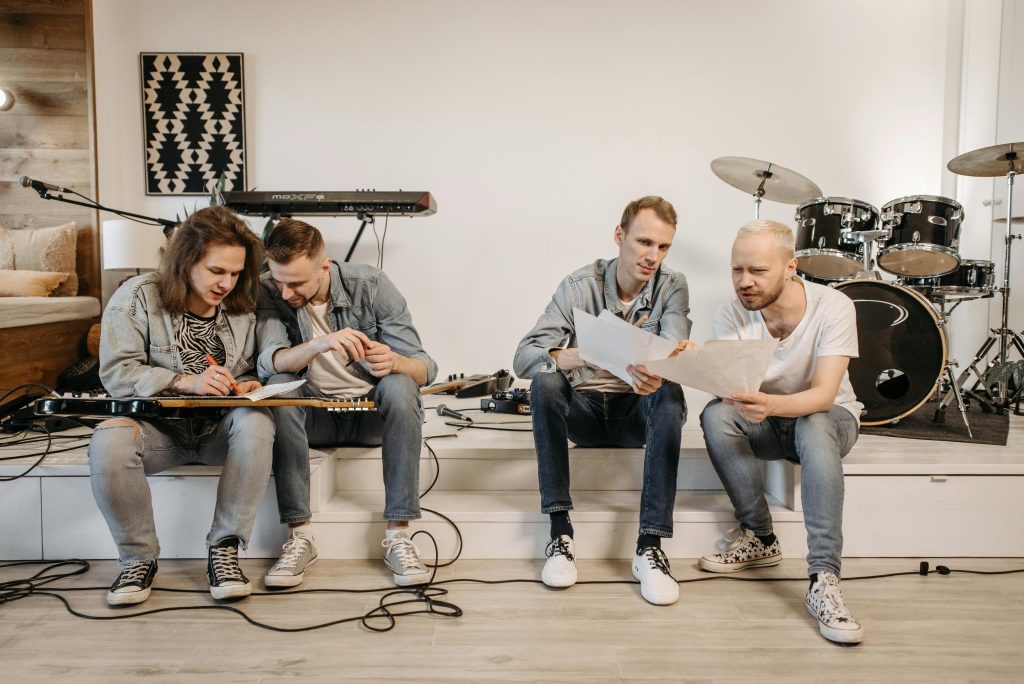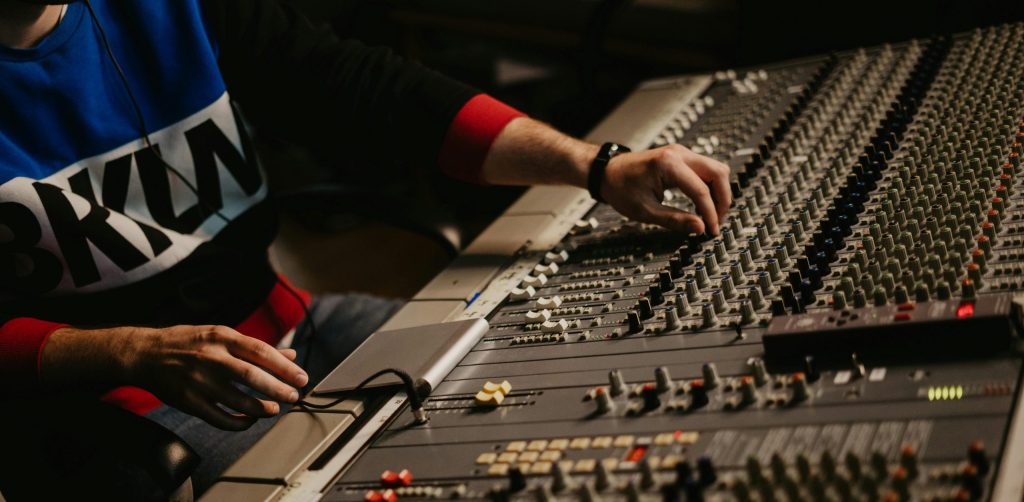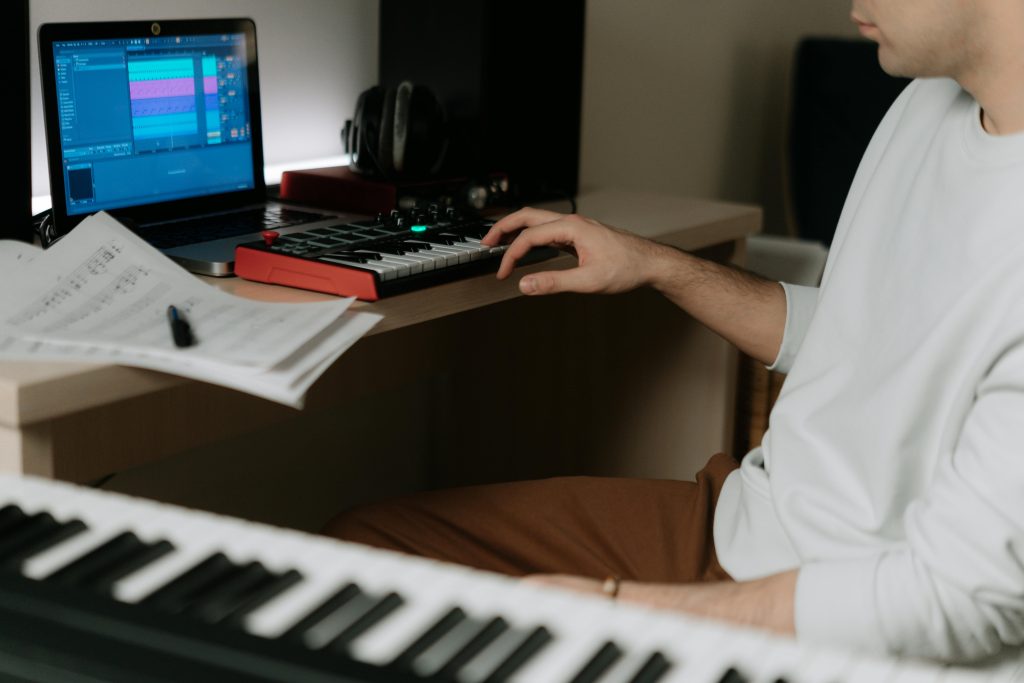
In today’s music production scene, collaborating remotely with session musicians is a game-changer for indie artists and singer-songwriters. Geography no longer limits creativity; a top-notch guitarist or drummer is just a call away. When done right, remote collaborations are seamless, productive, and rewarding, bringing fresh perspectives and unmatched expertise to your projects. We’ll cover how to master these remote sessions—from picking the right musicians to effective communication and project management—to ensure your music reaches new creative heights. For more on remote collaboration tools, check out this comprehensive guide on remote music collaboration.
Choosing the Right Session Musicians
Finding the perfect session musicians for your project is crucial to achieving the sound you’re after. Let’s explore how to define your needs and research potential collaborators effectively.
Defining Musical Style and Needs
Before diving into your search for session musicians, it’s essential to have a clear vision of your project’s musical style and specific needs. This clarity will guide you in finding the right talent and ensuring a successful collaboration.
Start by analyzing your song or project. What genre does it fall into? Are there any specific influences or reference tracks you’re drawing inspiration from? Jot down these details to create a musical profile for your project.
Next, identify the specific instruments or skills you need. Are you looking for a virtuoso guitarist, a soulful vocalist, or perhaps a skilled producer to add some polish? Be as specific as possible about the role you want the session musician to fill.
Consider the level of expertise required. Are you open to working with emerging talent, or do you need a seasoned professional with years of experience? Your budget may influence this decision, so be realistic about what you can afford.
Research and Review Portfolios
Once you’ve defined your needs, it’s time to start your search for the perfect session musicians. The internet has made this process easier than ever, with numerous platforms dedicated to connecting artists with session musicians.
Begin by exploring reputable online marketplaces for musicians. Websites like Amuse offer great resources for finding and collaborating with remote talent. Take time to browse through profiles and listen to samples of their work.
Pay close attention to the musicians’ portfolios. Look for projects similar to yours in terms of genre or style. This will give you a good indication of whether they can deliver the sound you’re after.
Don’t hesitate to reach out to potential collaborators with questions. Ask about their experience, equipment, and availability. This initial communication can also give you a sense of how well you might work together.
Lastly, check for reviews or testimonials from previous clients. These can provide valuable insights into the musician’s professionalism, reliability, and ability to take direction.
Clear Communication is Essential
Effective communication is the cornerstone of successful remote collaborations. Let’s explore how to articulate your vision and provide clear instructions to your session musicians.
Outlining Project Vision and Goals
When working with remote session musicians, it’s crucial to paint a clear picture of your project’s vision and goals. This shared understanding will help ensure everyone is working towards the same creative outcome.
Start by crafting a concise but comprehensive project brief. This document should outline the overall concept of your song or album, including the emotions you want to evoke and the message you’re trying to convey.
Include references to similar artists or tracks that inspire your project. These examples can provide valuable context and help your collaborators understand the sound you’re aiming for. You might even create a playlist of reference tracks to share with your team.
Don’t forget to discuss your target audience and any specific goals you have for the project, such as radio play or sync licensing opportunities. This information can influence the approach your session musicians take to their contributions.
Providing Detailed Notes and Instructions
Once you’ve established the big picture, it’s time to get into the nitty-gritty details. Clear, specific instructions will help your session musicians deliver exactly what you need.
Begin by breaking down the song structure and highlighting the sections where you need contributions. Be precise about the instrumentation you’re looking for in each part. For example, “I need a clean electric guitar with a slight chorus effect for the verse, building to a distorted lead in the chorus.”
Provide tempo, key, and time signature information upfront. If you have sheet music or chord charts, share these as well. The more information you can provide, the smoother the process will be.
Don’t shy away from describing the emotional quality you’re after. Phrases like “energetic but not aggressive” or “melancholic with a hint of hope” can guide your musicians towards the right performance. Check out this guide on remote collaboration for more tips on effective communication.
Sharing Files and Project Organization
Efficient file sharing and organization are key to smooth remote collaborations. Let’s explore how to prepare your tracks and use cloud-based services effectively.
Preparing Organized Demo Tracks
Well-prepared demo tracks are the foundation of successful remote sessions. They provide a clear roadmap for your session musicians, ensuring everyone is on the same page.
Start by creating a clean, organized session in your DAW. Ensure all tracks are clearly labeled and grouped logically (e.g., drums, bass, guitars, vocals). This organization will make it easier for your collaborators to navigate the project.
Record a guide track that outlines the full arrangement of the song. This could be a simple piano or guitar part with a scratch vocal. The goal is to provide a clear structure for your session musicians to follow.
Export your demo tracks at the correct tempo and with a click track included. If possible, use 24-bit WAV files for the highest quality. Remember to leave headroom in your mix (aim for peaks around -6dB) to allow space for the new contributions.
Using Cloud-Based Storage Services
Cloud-based storage services are essential for efficient file sharing in remote collaborations. They provide secure, accessible platforms for exchanging large audio files and project data.
Popular options include Google Drive, Dropbox, and WeTransfer. These services offer ample storage space and easy-to-use interfaces. Choose a platform that all team members can access comfortably.
Organize your cloud storage with a clear folder structure. Create separate folders for demos, final takes, project files, and any reference materials. This structure will help keep your project tidy as files start flowing back and forth.
Set up shared folders with the appropriate permissions for each team member. This ensures everyone has access to the files they need while maintaining the security of your project. For more insights on remote collaboration tools, check out this discussion on Reddit.
For more detailed guidance on setting up your remote collaboration workflow, check out this comprehensive guide on getting started with remote music collaboration.
Share this blog
Related Blogs










